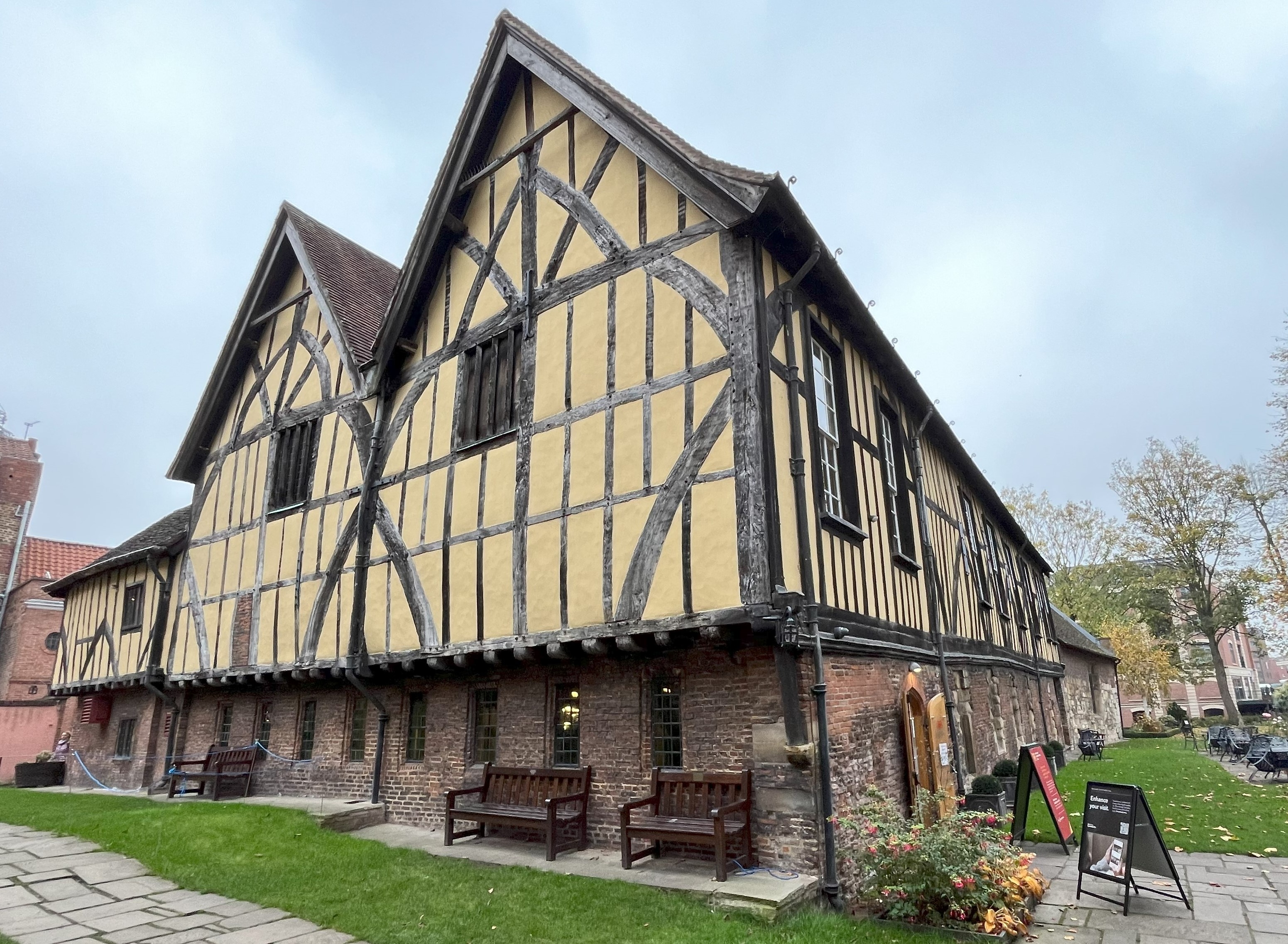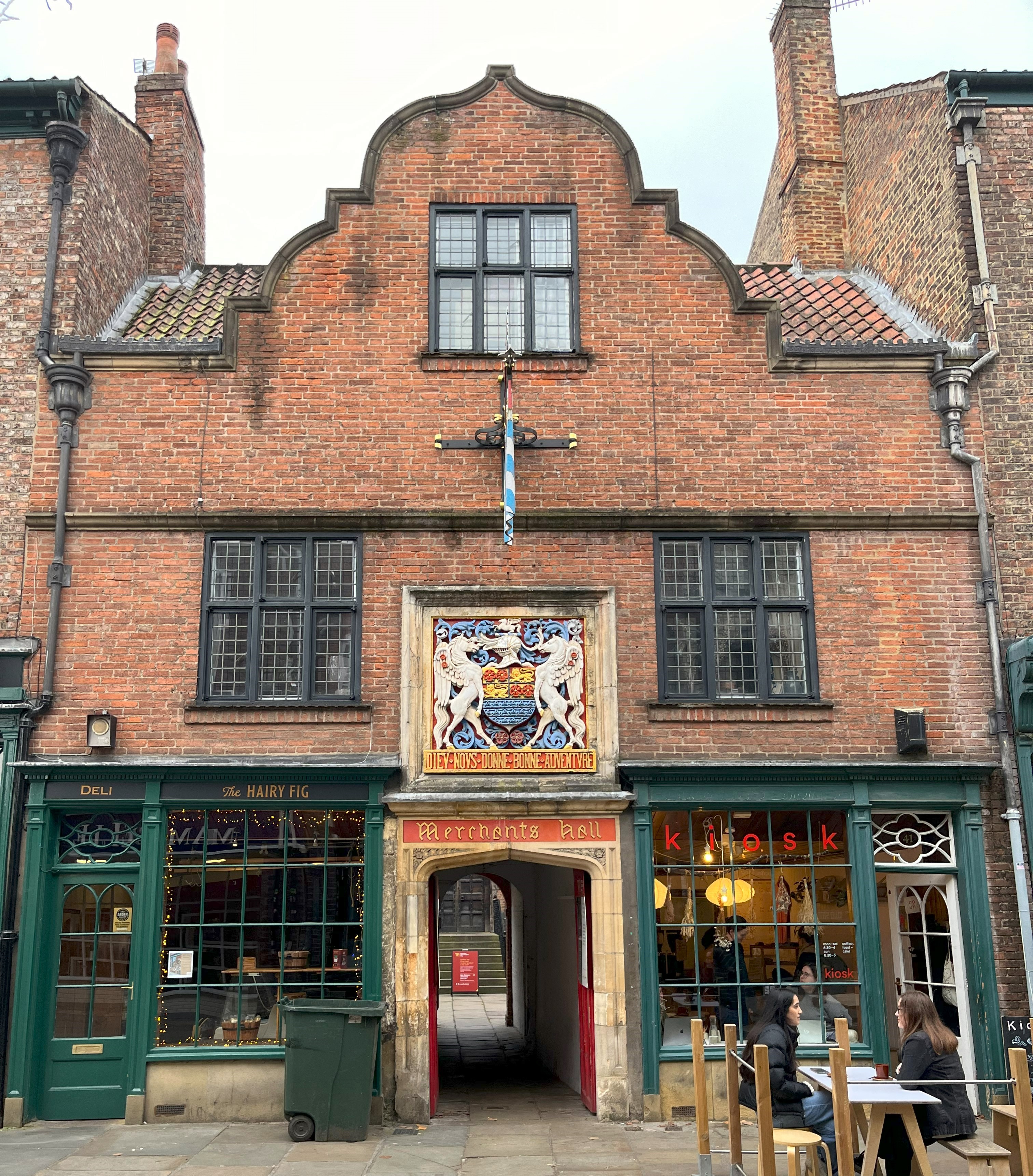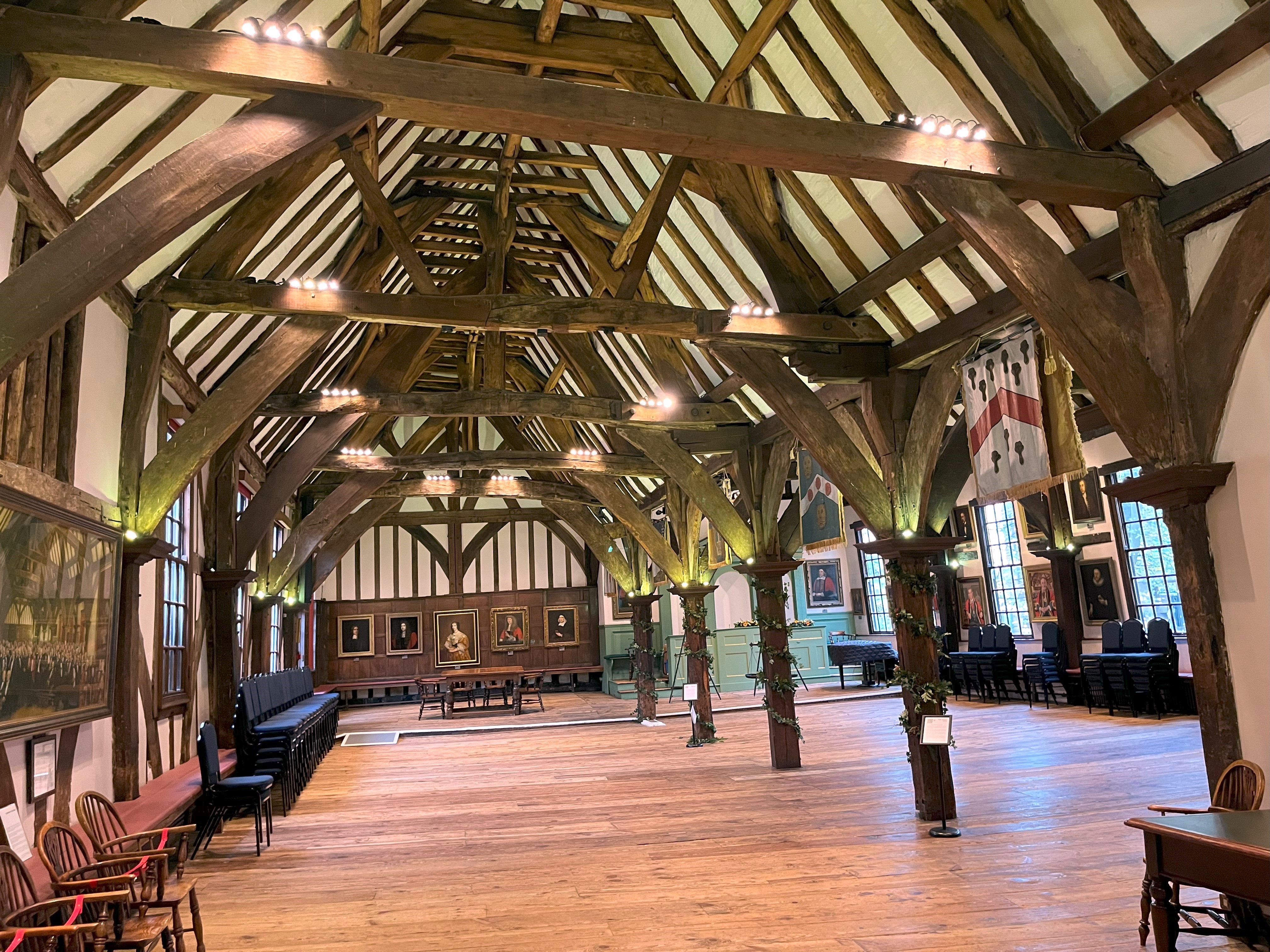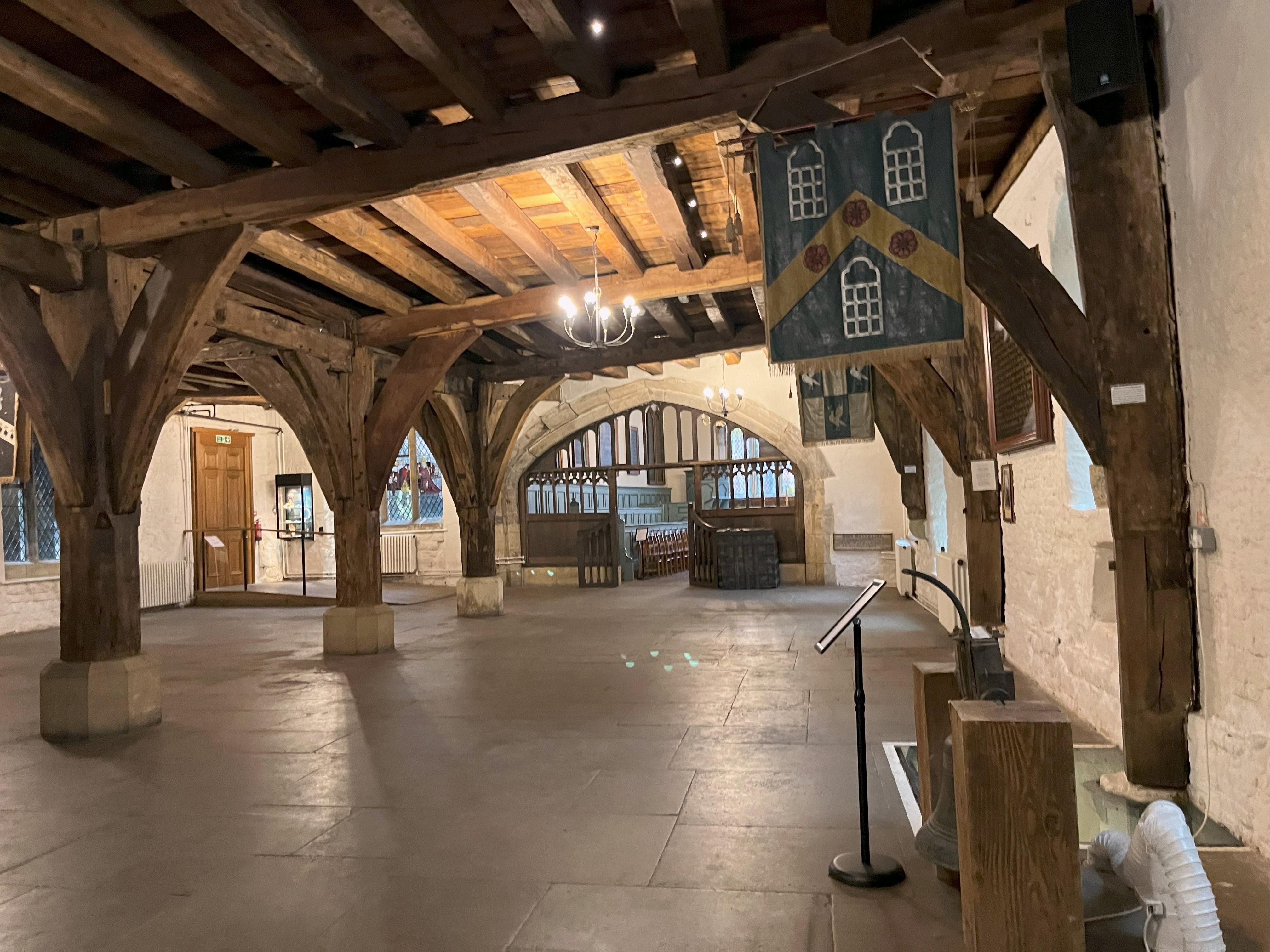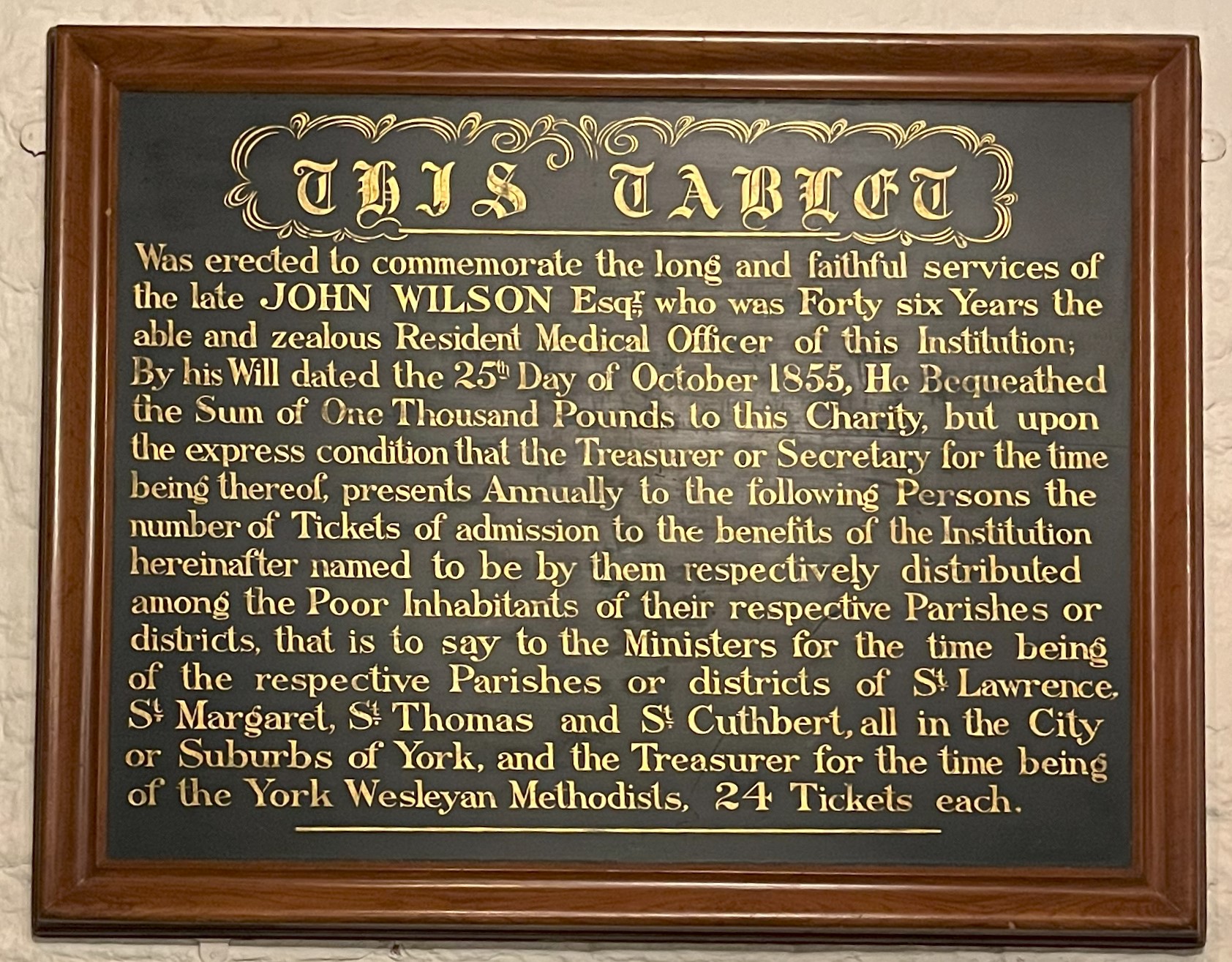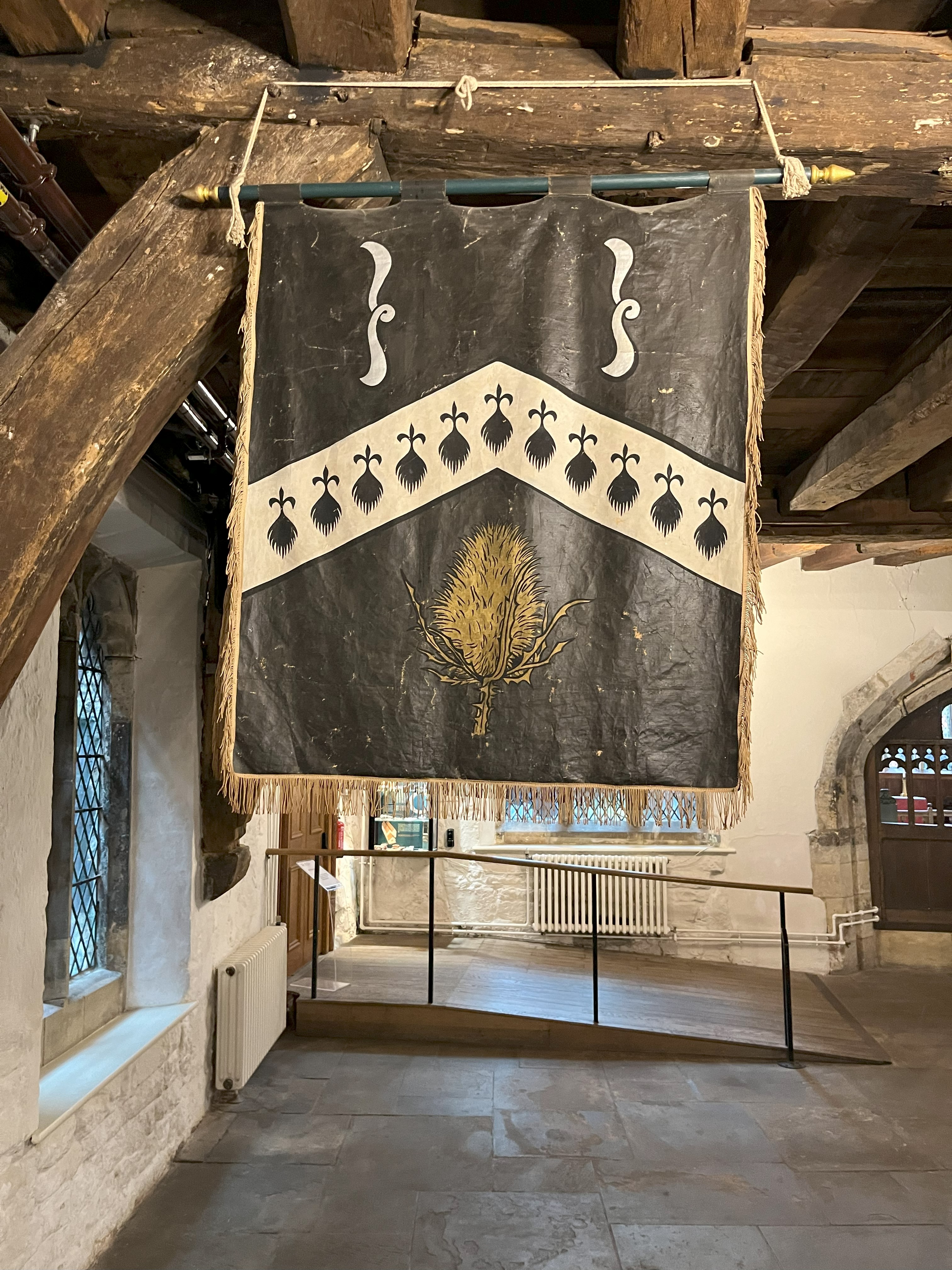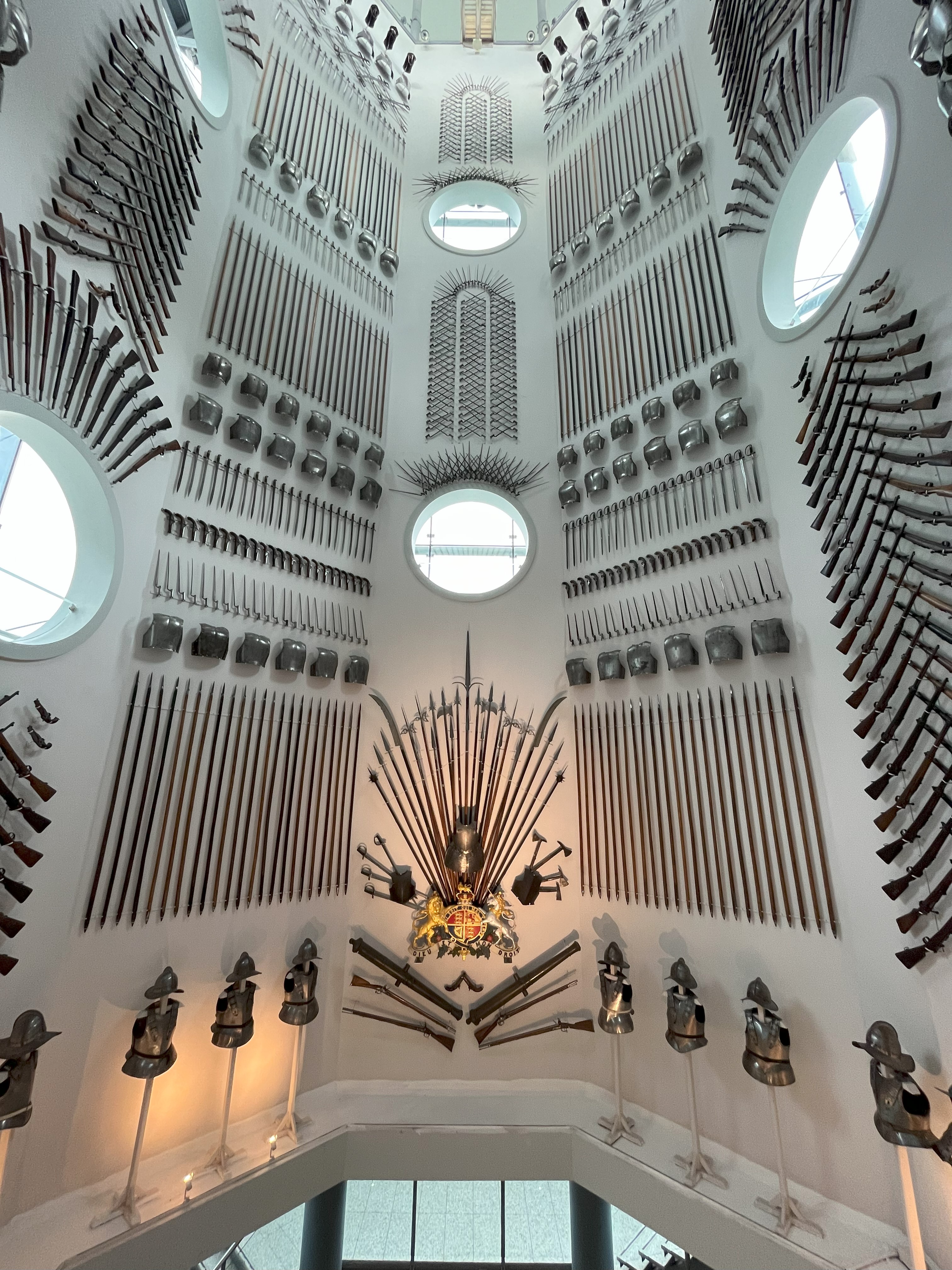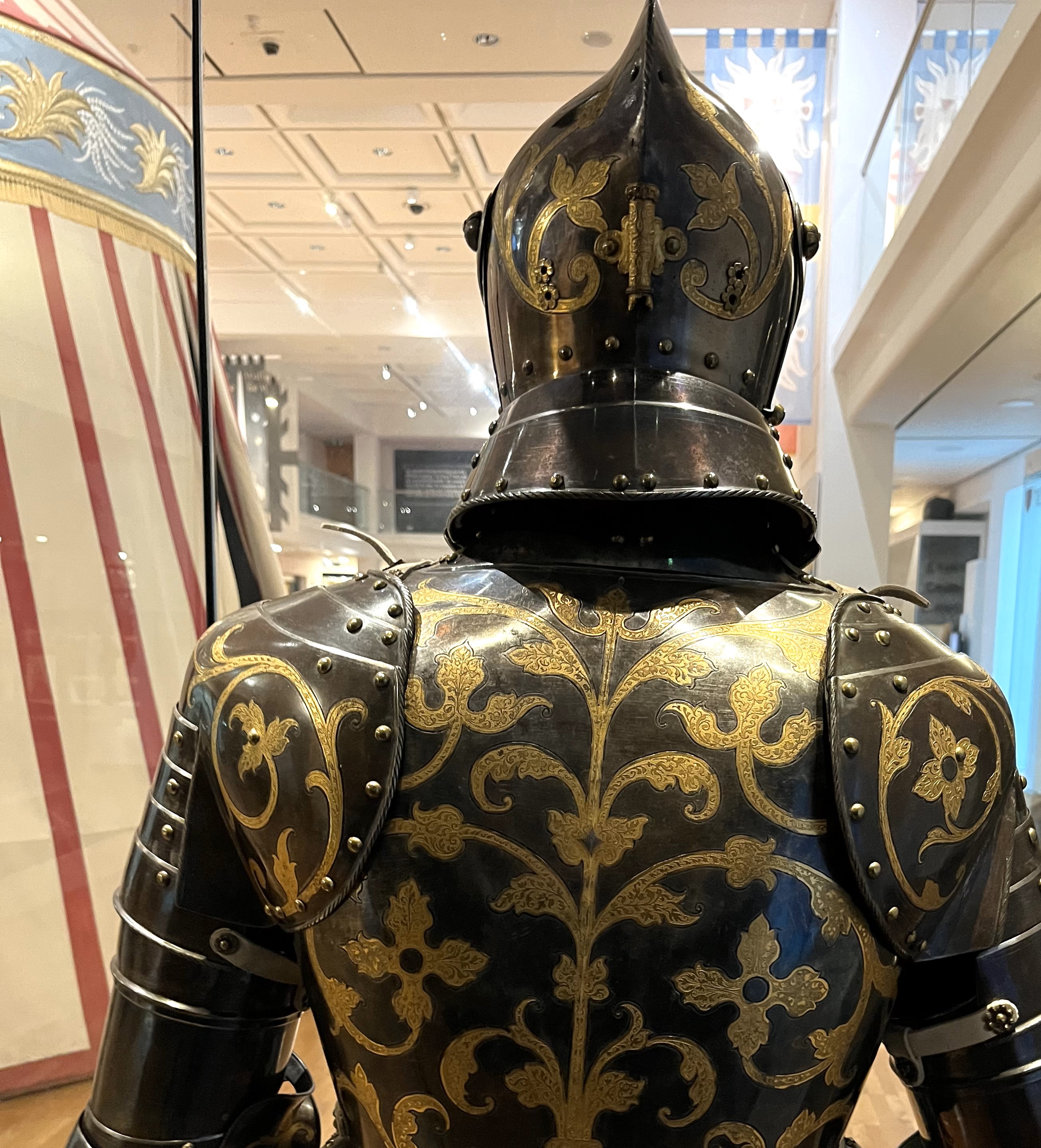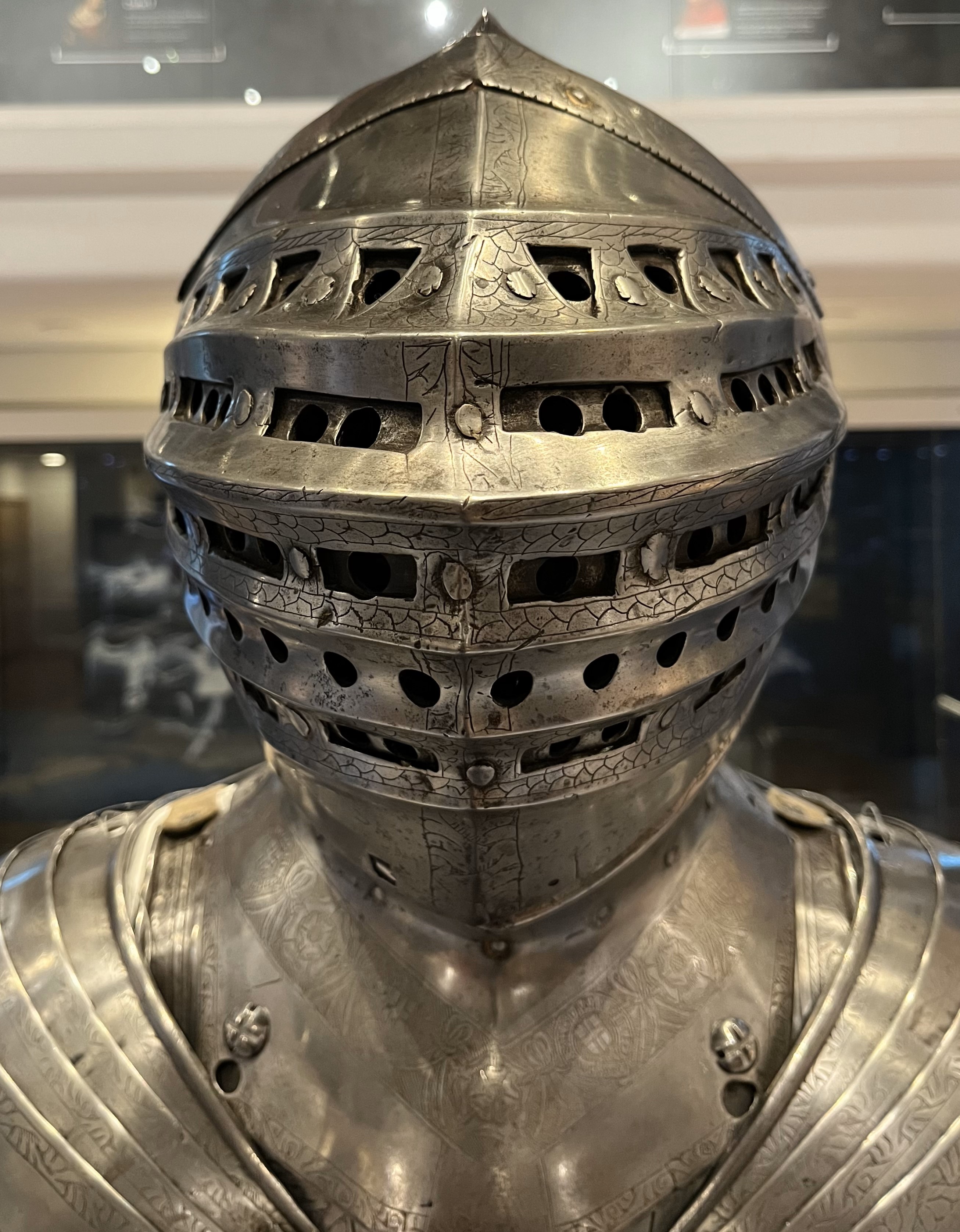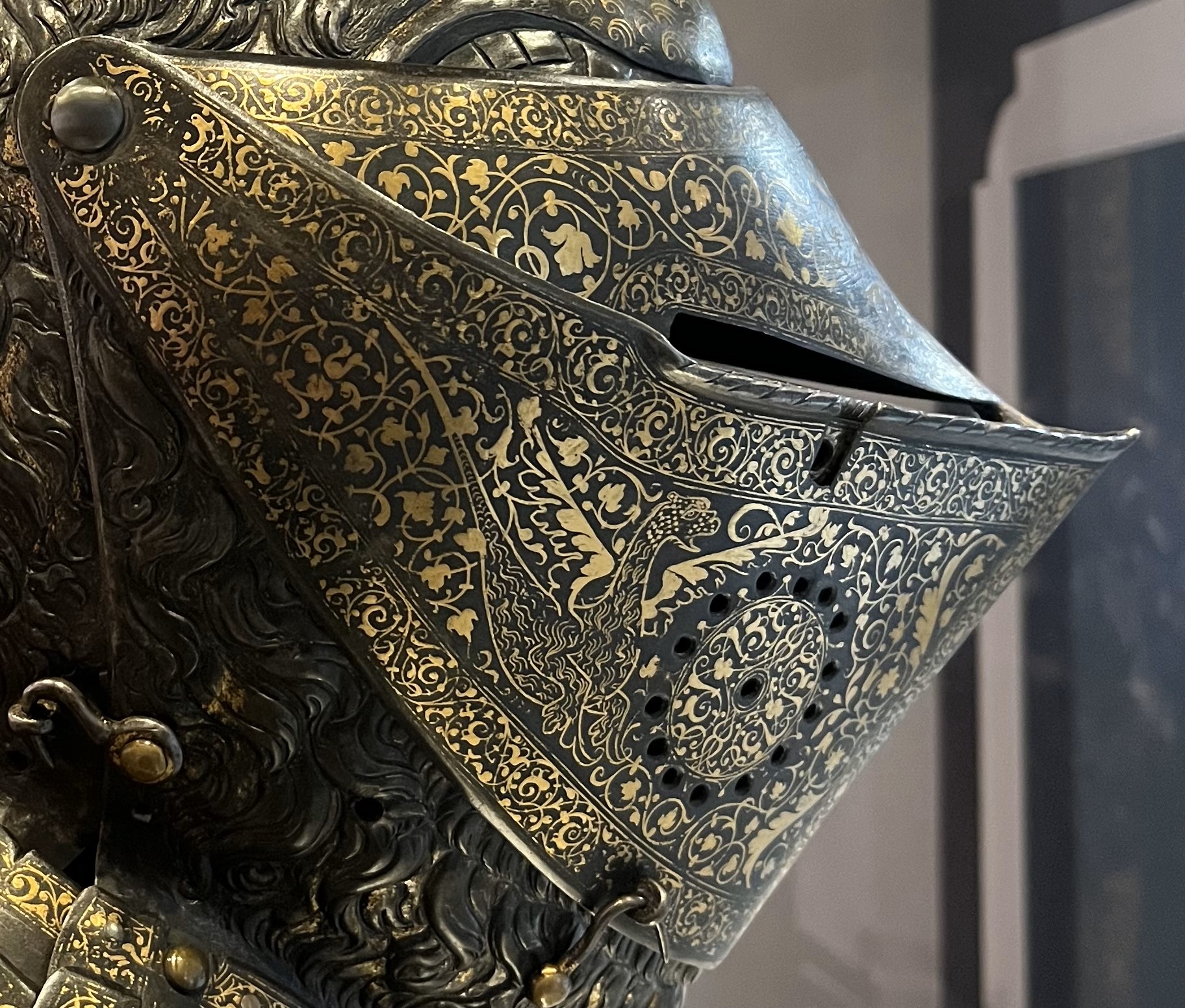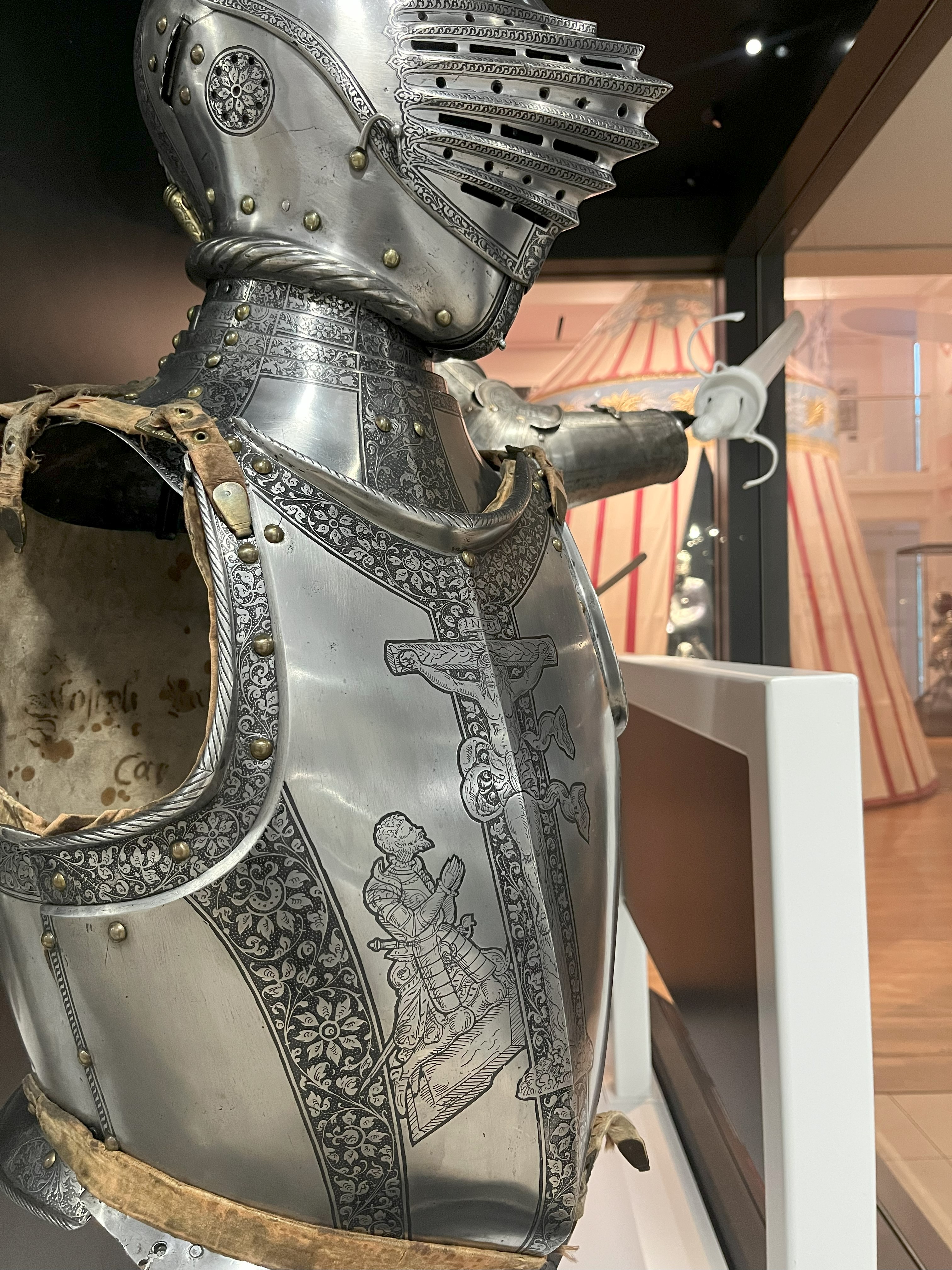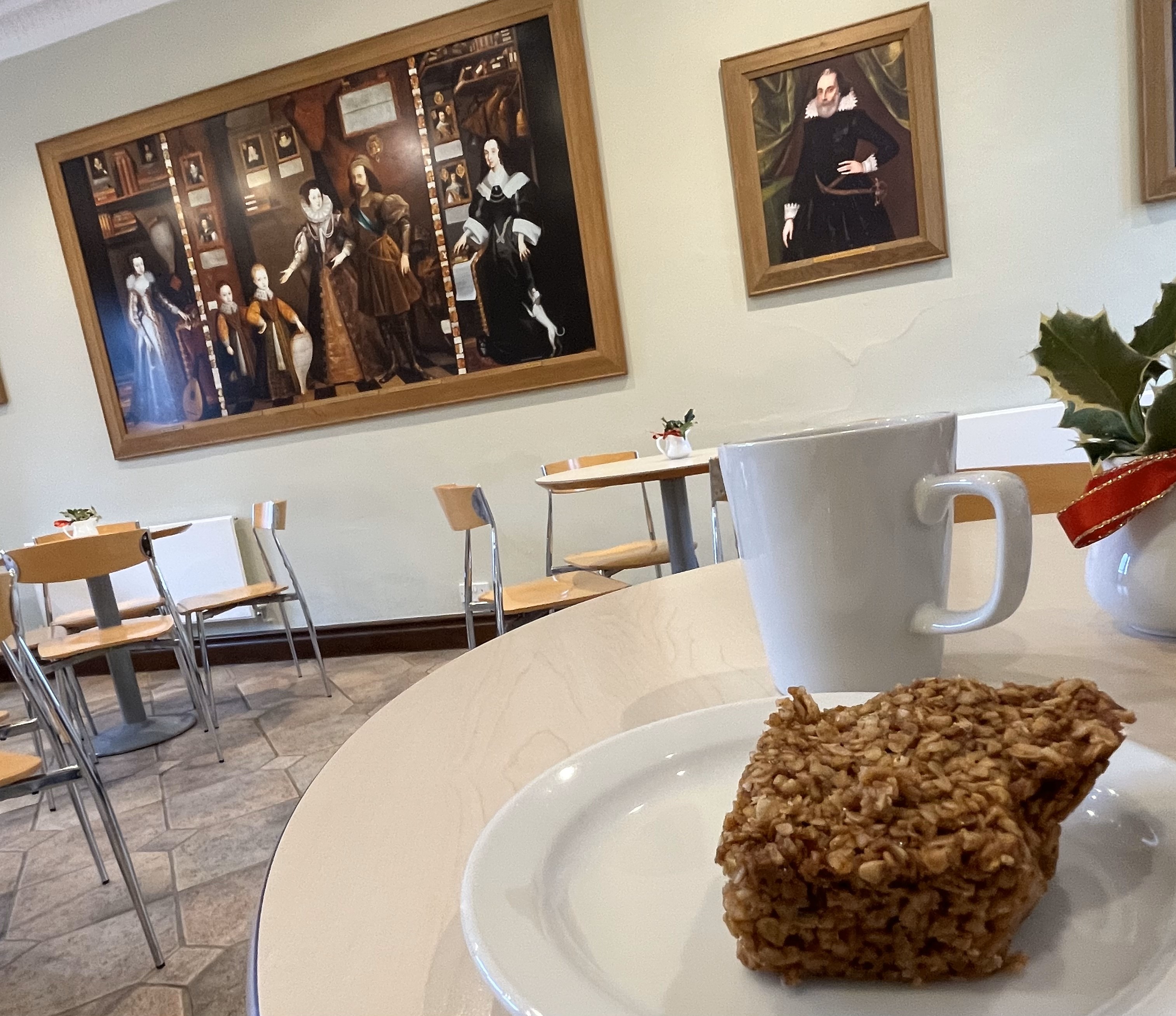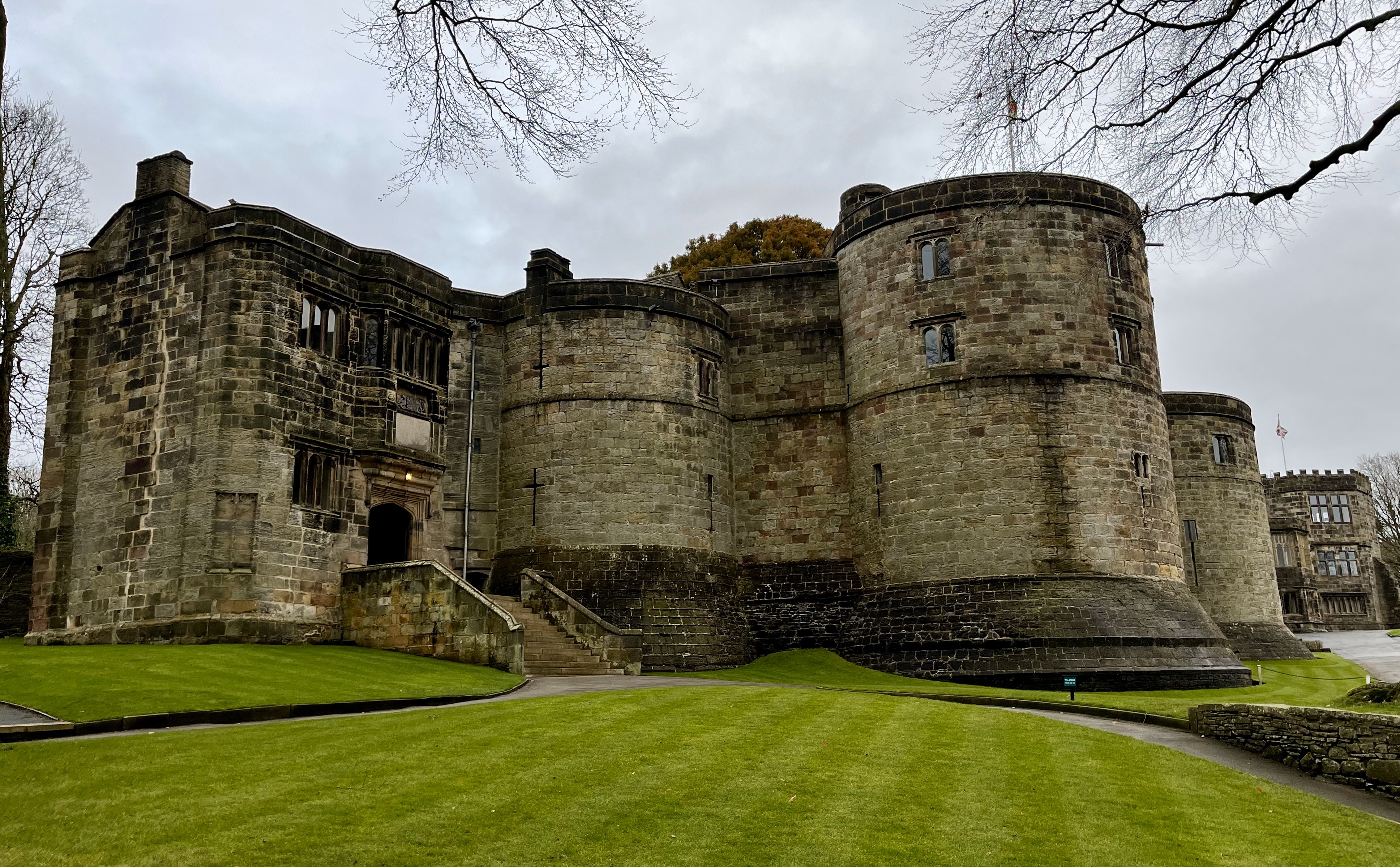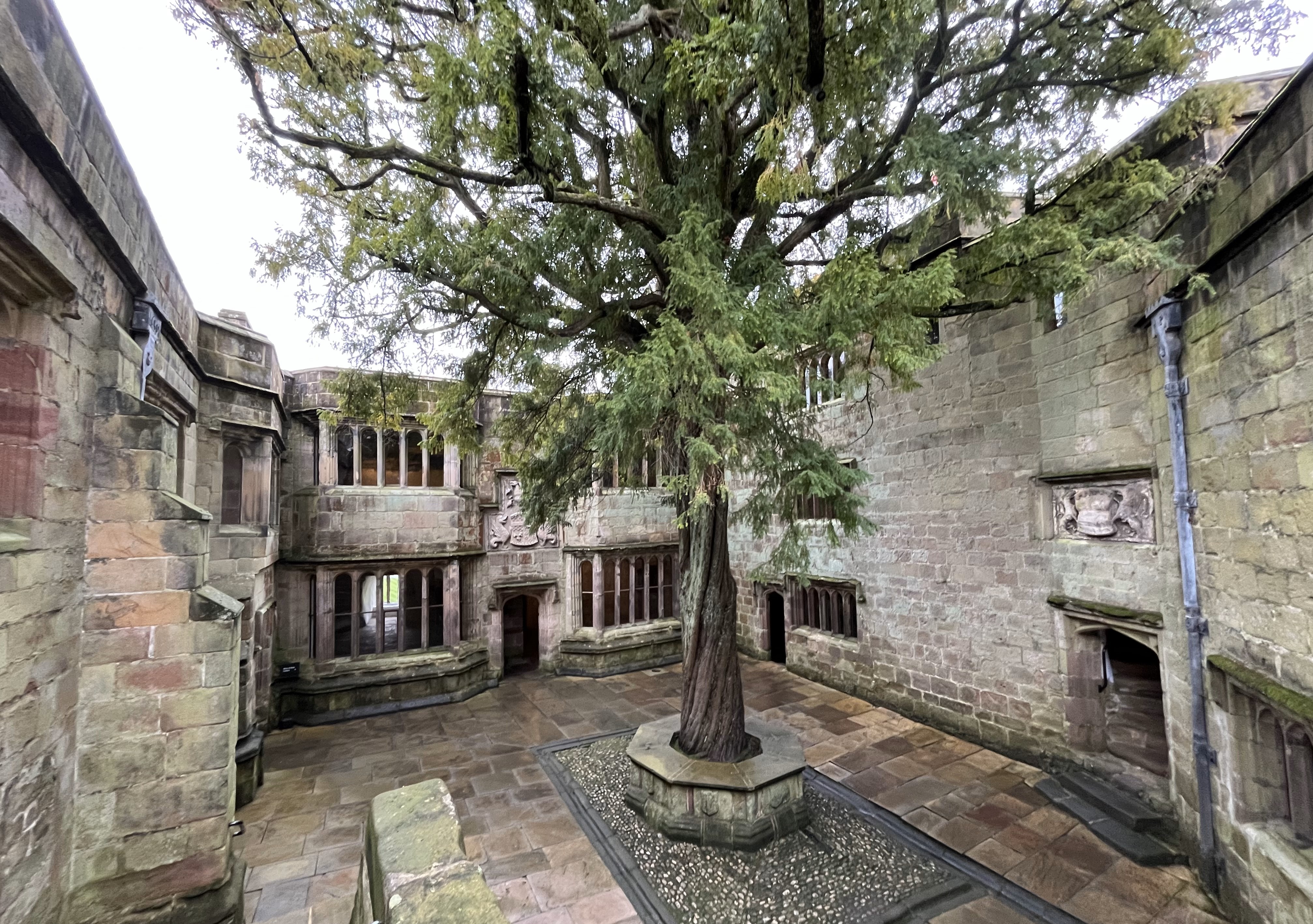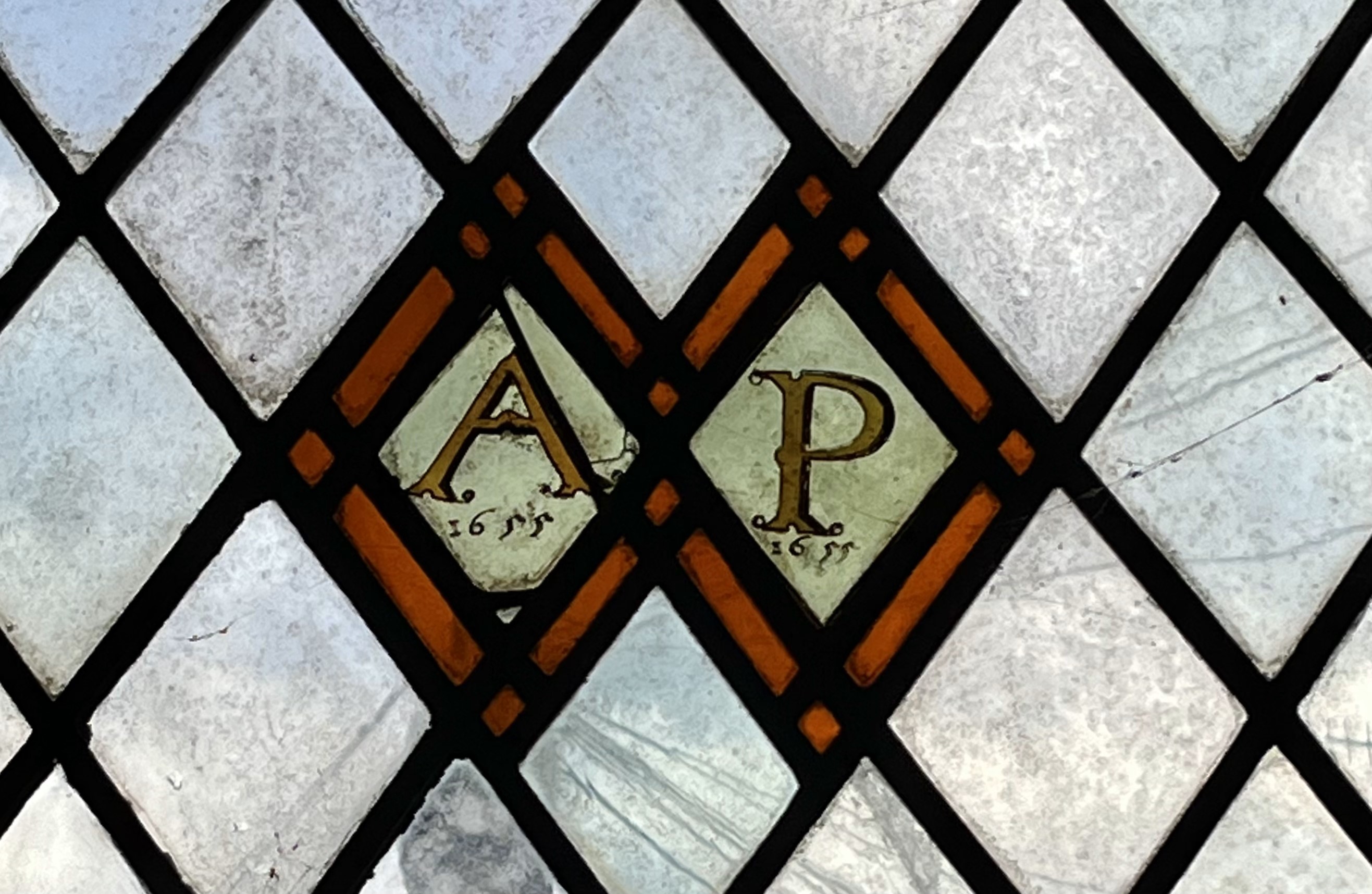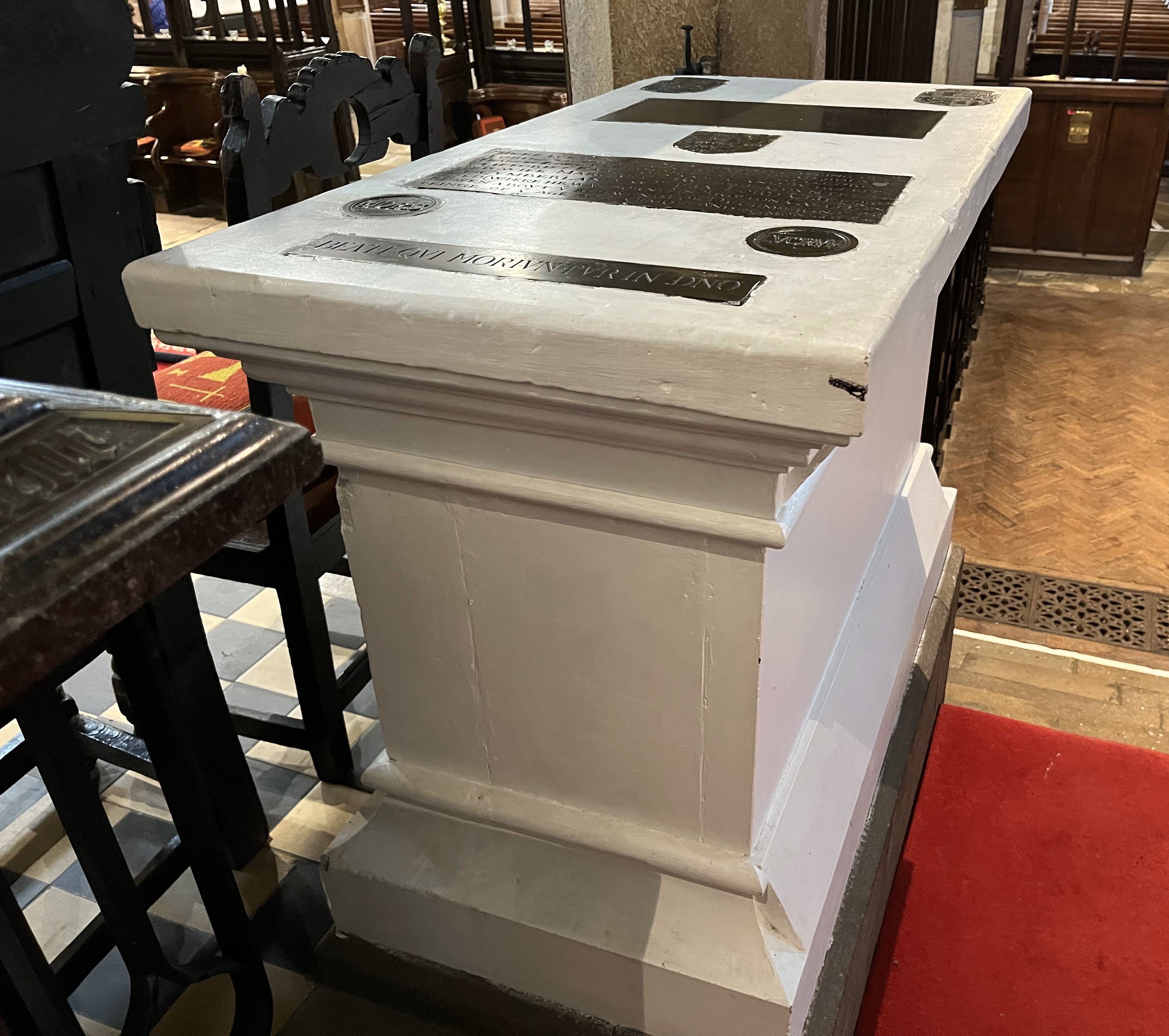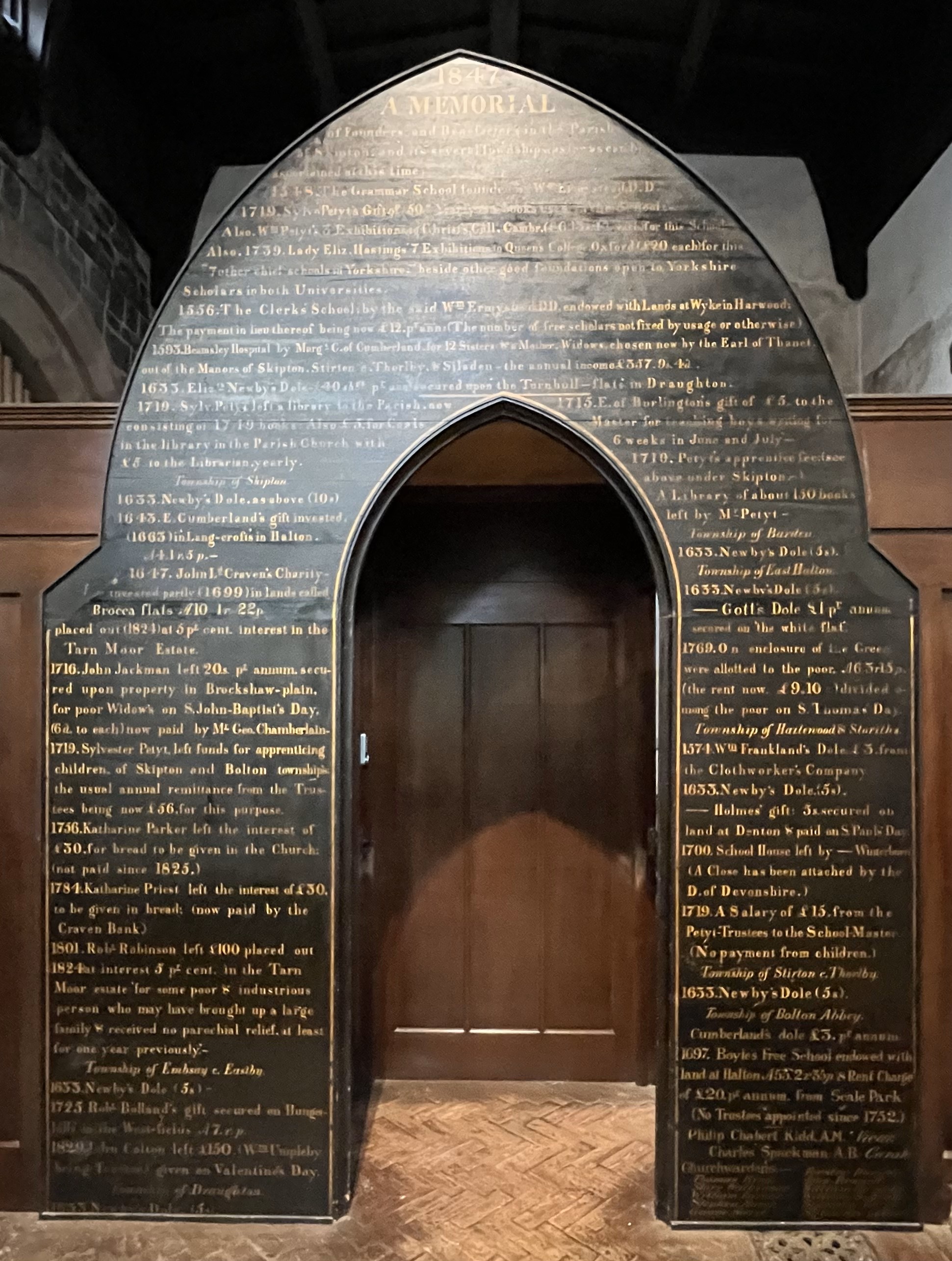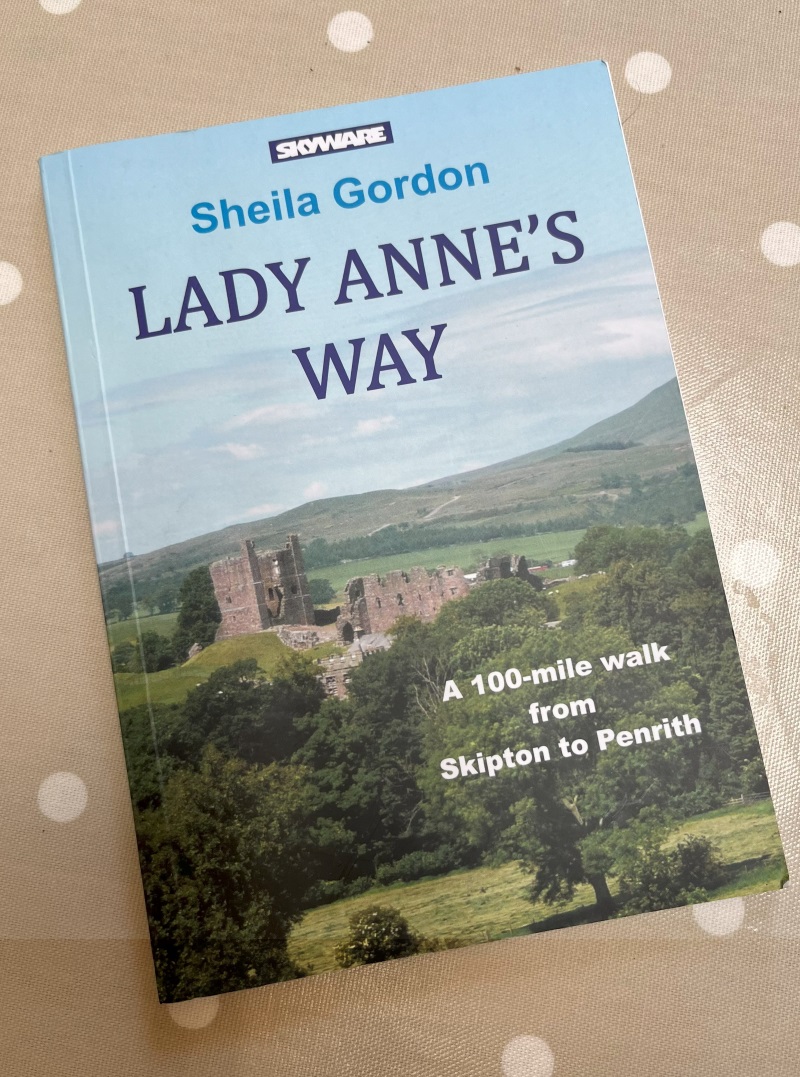
I set off yesterday on the first stretch of the long distance trail the 'Lady Anne's Way' - which runs from Skipton to Penrith. The 100 mile route has been planned around the idea of one of Lady Anne Clifford's journeys between her Northern properties - taking in the places of her birth (Skipton) and death (Brougham).
The route can be done as six (challenging!) stages - but I think I'll complete it more gradually, perhaps breaking up some of the days, as 16 miles is getting to be a bit of an ask!
However, to get things going I stuck with 'stage 1' as written in the guide, 15½ miles from Skipton to Grassington in Wharfedale.
It has been a baking-hot spring and summer, and yesterday was no exception. Fortunately there was a little bit of cloud cover and an occasional breeze in the river valleys.
The route starts by the Parish church in Skipton, which I visited last year. Not much time to linger on this occasion, but I grabbed a quick memento of Anne's regular habit of self-memorialisation - this time her initials (Anne Pembroke) in the restored church windows.
After that, it was up hill over a golf course and winding through the back of houses in the village of Embsay - all accompanied by beautiful sunshine.
The route crossed over Halton Edge to drop down into Wharfedale and the next example of Anne reclaiming and restoring her properties - literally cementing her reputation - Barden Tower.
As at Skipton Castle, and her other restored properties, Lady Anne had placed a memorial inscription over the entrance to the building.
The text reads:
THIS BARDEN TOWER WAS REPAYRD BY THE LADIE ANNE CLIFFORD COUNTESS DOWAGER OF PEMBROOKE DORSETT AND MONTGOMERY BARONESSE CLIFFORD WESTMERLAND AND VESEIE LADY OF THE HONOR OF SKIPTON IN CRAVEN AND HIGH SHERIFESSE BY INHERITANCE OF THE COUNTIE OF WESTMERLAND IN THE YEARES 1658 AND 1659 AFTER IT HAD LAYNE RUINOUS EVER SINCE ABOUT 1589 WHEN HER MOTHER THEN LAY IN ITT AND WAS GREATE WITH CHILD WITH HER TILL NOWE THAT ITT WAS REPAYRED BY THE SAYD LADY. ISA. CHAPT. 58. VER. 12. GOD'S NAME BE PRAISED!
Lady Anne had two marriages, the first to Richard Sackville ('a notorious wastrel and spendthrift') accounts for her 'Dorsett' title (he was Earl of the county) and the second to Philip Herbert (an ill-matched and loveless union) for 'Pembrooke' and 'Montgomery'. The title of Baroness of Westmorland was what had been denied Anne on the death of her father, and which she and her mother fought through the courts to try and regain. I spent a while puzzling over 'VESEIE' before deciding it probably refers to the title of 'Baron Vessy', which Anne's grandfather apparently tried to claim via marriage. Her role as High Sheriff gave her power over the selection of MPs and linked her into the regional assize courts.
The biblical text from the Book of Isaiah is another Lady Anne regular,
'And they that shall be of thee shall build the old waste places: thou shalt raise up the foundations of many generations; and thou shalt be called, The repairer of the breach, The restorer of paths to dwell in.'
Barden Bridge was a great spot for ice cream, the bridge was another one of the buildings financed by Lady Anne.
The next section of the walk was the most beautiful of the day, passing alongside the River Wharfe for several scenic miles.
My final photo is towards the end of the day, looking down over the village of Burnsall with the moors rising above it (taken after what was a really steep climb - sometimes photography does lie! 😀) From here the final leg took me through pastures into the village of Grassington, just in time for my bus back to Skipton. Only 84½ miles to go!




